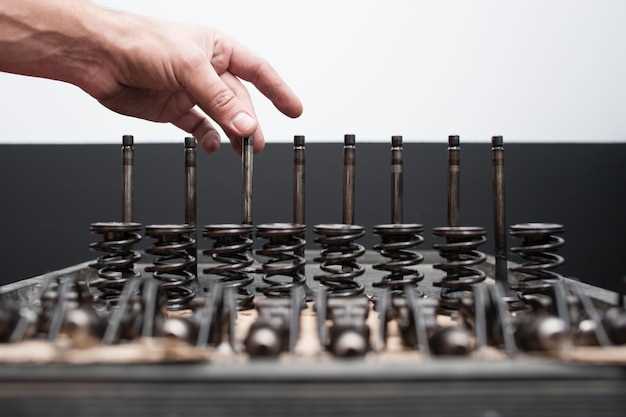How to Source Original Parts for Restoration

Restoration projects often carry with them the challenge of sourcing original components that not only enhance the aesthetic value of the piece but also ensure its authenticity and functionality. When it comes to reviving historical vehicles, antiques, or any item of significant cultural heritage, the importance of using authentic parts cannot be overstated. The integrity of the restoration process hinges on the ability to procure these original components, which can greatly influence the overall outcome of the project.
Successful sourcing of authentic parts requires a strategic approach that combines research, networking, and an understanding of the market. It’s essential to identify reputable suppliers and specialists who have access to a wide range of original components. Additionally, knowing how to assess the quality and authenticity of parts is critical, as the restoration community is rife with reproductions that may not match the desired standards.
Engaging with fellow enthusiasts and professionals through forums, social media, and trade shows can yield invaluable information and potential leads on where to find hard-to-source original components. Utilizing these resources effectively can save time and improve the chances of a successful restoration, ensuring that the end result reflects the original craftsmanship and design intentions.
Identifying Reliable Suppliers for Original Components
When embarking on restoration projects, sourcing authentic parts is paramount to preserving the integrity and value of a vehicle or item. To ensure you obtain quality components, it’s essential to identify reliable suppliers who specialize in original components.
Start by researching reputable suppliers with extensive experience in your specific field. Look for companies that have established a strong reputation among enthusiasts and professionals in restoration communities. Online forums, social media groups, and industry events can serve as valuable resources to gather recommendations.
Next, verify the credentials of potential suppliers. Check if they are recognized by relevant trade organizations or participate in industry certifications. Authenticity seals or warranties can further indicate reliable sourcing practices. Additionally, ensure that they provide clear documentation regarding the origin of the parts, as this is crucial for maintaining authenticity.
Another important aspect is assessing the quality of service. Contact suppliers directly to gauge their knowledge and willingness to help. A good supplier should be able to answer technical questions regarding parts and provide insights into their sourcing processes. Reliable communication indicates a higher level of professionalism.
Finally, when sourcing parts, engage in a comprehensive comparison of pricing and availability among multiple suppliers. While cost is important, it should not be the sole deciding factor. Prioritize suppliers who demonstrate a commitment to quality and customer satisfaction, as these aspects are integral to successful restoration projects.
By following these guidelines, you can confidently identify trustworthy suppliers for original components, ensuring your restoration projects achieve the desired authenticity and durability.
Evaluating the Quality and Authenticity of Parts

When sourcing parts for restoration projects, ensuring their quality and authenticity is paramount. Begin by researching the specific components required for your project, identifying their original specifications and characteristics. Understanding these details helps establish benchmarks against which you can assess the parts you encounter.
Inspecting the physical condition of parts is essential. Look for signs of wear, corrosion, or repairs that may indicate lower quality or authenticity. Genuine parts often exhibit consistent manufacturing marks, such as serial numbers or logos, which should match the original specifications precisely. Any discrepancies can be a red flag in determining authenticity.
For sourcing, consider reputable suppliers or specialized auctions that focus on authentic parts. Engaging with online forums and enthusiast communities can provide insights into reliable sources. Many experts in these communities may have extensive knowledge about specific parts, guiding you toward only the best options.
Documentation plays a crucial role in validating authenticity. Request provenance or certification from sellers, especially for rarer parts. Historical records, receipts, or expert assessments can bolster the credibility of a part’s authenticity. Additionally, cross-referencing with other restoration projects can provide further assurance of quality.
Finally, if possible, consult with a professional before making significant purchases. Their experience can help you gauge the overall quality and ensure that the parts you are sourcing will meet the high standards required for a successful restoration.
Navigating Legal and Ethical Considerations in Sourcing

When sourcing original parts for restoration projects, it is crucial to navigate both legal and ethical considerations to ensure compliance and maintain integrity in the process.
Firstly, understanding copyright and trademark laws is essential. Many original parts are protected under intellectual property rights.
- Verify if the parts you intend to source are patented or trademarked.
- Obtain necessary permissions from manufacturers to use their designs.
Secondly, consider the authenticity of the parts. Using counterfeit or replica components can lead to legal repercussions and diminish the project’s value.
- Research suppliers to ensure they provide verified original parts.
- Request documentation proving authenticity to safeguard against purchasing fakes.
Ethically, sourcing decisions should consider the impact on communities and industries. Engage with local suppliers to support small businesses and reduce environmental impact.
- Evaluate supplier practices concerning labor standards and environmental sustainability.
- Ensure that your sourcing practices do not contribute to unethical labor or exploitation.
Lastly, transparency in sourcing is vital. Always disclose where parts are obtained, especially if they belong to a collector community. This promotes trust and respect among peers.
By considering these legal and ethical factors, restoration projects can maintain integrity while sourcing authentic parts, ensuring quality and reliability throughout the process.



